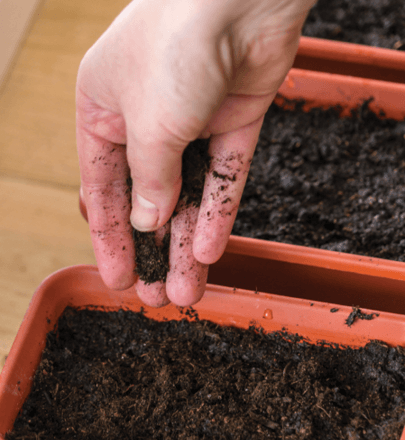[Ebook Việt hóa] The Houseplant Handbook: Basic Growing Techniques and a Directory of 300 Everyday Houseplants
[Ebook Việt Hoá] 300 Everyday Houseplants: Potting Composts (Hỗn hợp giá thể trồng cây cảnh)
- Nguồn: [Ebook] The Houseplant Handbook: Basic Growing Techniques and a Directory of 300 Everyday Houseplants – David Squire
- Biên tập: Dũng Cá Xinh (Tháng 02/2022)
- Dịch: Team Codai.net
English
Potting Composts
Garden soil is unsuitable for growing plants in pots indoors; it has a variable nature and may contain pests, diseases, and weed seeds. Buy special compost mixtures.
Traditionally, loam-based composts were—and still are—used. These are formed of partially sterilized loam, sharp sand (also known as concreting sand), and peat, with the addition of fertilizers and ground limestone or chalk. Never use soft sand (or builders’ sand), which compacts when wet and does not allow air to penetrate the compost.
Difficulties in obtaining good loam encouraged the creation of composts without loam, known as soil-less composts. They are formed mainly of mixtures based on granulated peat and are uniform, as well as lighter and cleaner to use than loam-based types. Both have advantages and disadvantages.
The term compost is often confusing and can be interpreted in several ways. Here are a few terms you might encounter.
- are free from pests and diseases and are specially formulated to encourage the active growth of roots, providing suitable plant foods, air, and moisture. .
- are primarily based on partially sterilized loam.
- , often known as soil-less compost mixes, are mainly formed of granulated peat and, for that reason, are frequently called peat-based composts.
- is derived from organic waste material from gardens and kitchens that has been placed in a compost heap or bin and allowed to decay. Eventually, this material, when fully decayed and friable, is either dug into soil to improved its structure and fertility, or spread on the surface of bare soil or around (but not touching) established plants to increase soil fertility and inhibit the growth of weeds (known as mulching). The decaying process can take up to a year and is influenced by temperature, bacteria activity, air, and moisture. This material is not a suitable compost in which to grow house plants.
- (sometimes just referred to as potting soil) is not suitable for house plants as it has a variable nature and may contain an imbalance of clay, silt, and loam as well as being contaminated by pests and diseases. It may also be excessively acidic or alkaline and nutritionally imbalanced.


Loam-Based Composts
- are heavier than peat-based types, giving greater stability to plants, especially those with a mass of foliage
- are unlikely to dry out as fast or as completely as peat-based types
- have a larger reserve of minor and trace plant foods than peat-based types
- are suitable for most houseplants
Peat-Based Composts
- are more uniform than loam-based composts
- are easily carried home in bags and stored (seal the bag’s top by folding it over)
- are light and easy to use
- dry out more quickly than loam-based types and are more difficult to remoisten if watering is neglected
- require plants to be fed at an earlier stage in their growth than with loam-based composts
Other Types of Compost
The continued removal of peat from peat beds has destroyed the environments of many animals, birds, insects and native plants, so there has been pressure to use more environmentally friendly composts. These are formed of several different materials, some of which are also used as additives to other composts to help retain moisture. Look for peat-free composts when buying soil-less types.
Specialist Composts
The range of plants grown indoors is wide, and it is clear that just one type of compost will not suit them all. Most flowering and foliage houseplants grow well in loam-based or peat-based composts (but do not change the type of compost when repotting a plant). Specialist plants, such as cacti and bromeliads, need types better suited to their specific needs. These can be purchased from garden centers and specialist outlets.
Tiếng Việt
Đang cập nhật
![[Ebook Việt Hoá] 300 Everyday Houseplants: Potting Composts (Hỗn hợp giá thể trồng cây cảnh) [Ebook Việt Hoá] 300 Everyday Houseplants: Potting Composts (Hỗn hợp giá thể trồng cây cảnh)](https://vn1.vdrive.vn/codai.net/2021/02/ebooks-300-houseplants-04-rescuing-and-repotting-a-plant-with-wet-compost.jpg)


